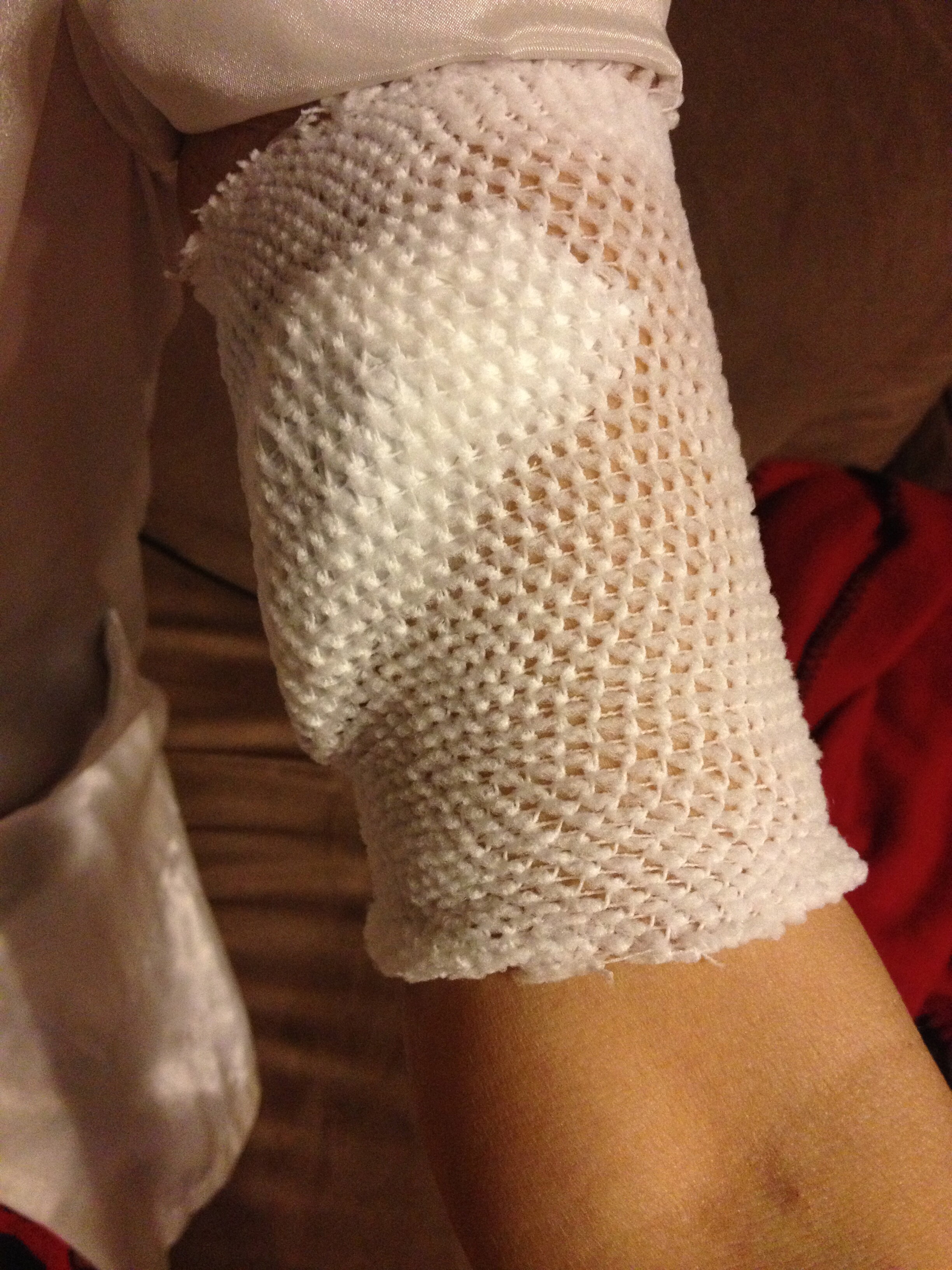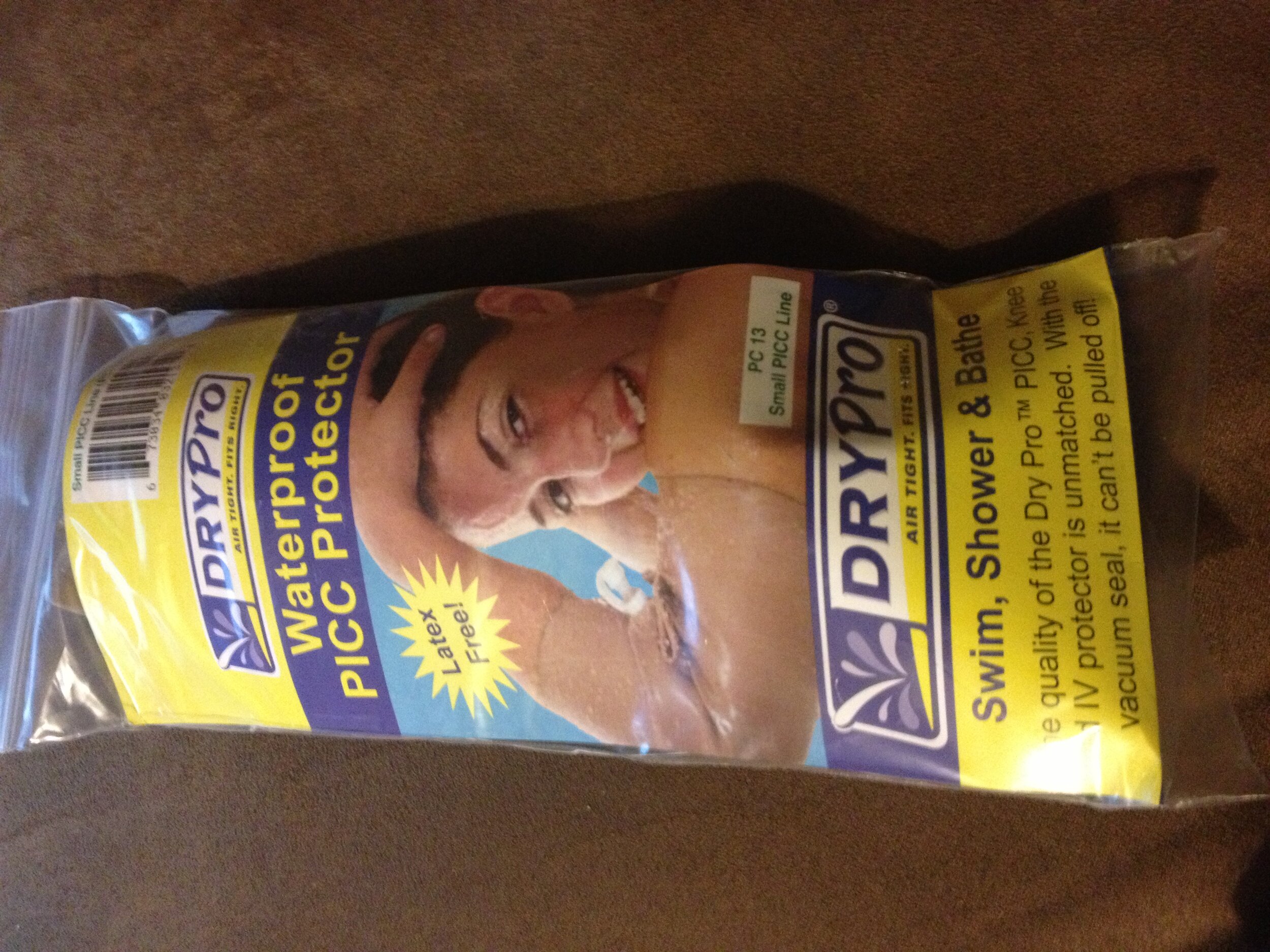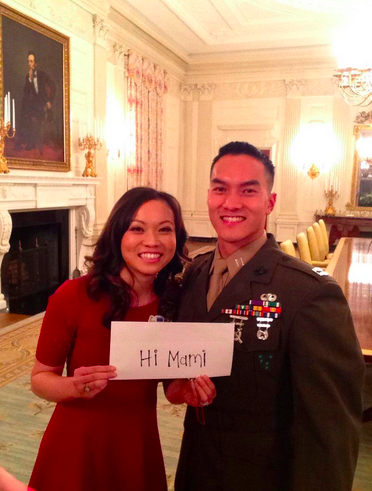Air Leaks are Good!
For the past few days, my mom's trachea has been so swollen that when they deflated the balloon on the ET tube, no air would come through. Today, they were finally able to see some signs of air coming through! This means that the swelling as subsided and hopefully they can extubate her soon!
Chimerism Analysis Good!
The Chimerism analysis shows that 99% of Mama Pham's cells are the donor cells! This is great news. It means that engraftment is happening (her body is taking the donated stem cells) and that the body is not making bad cells. Day 57 and going strong!I like the Seattle Cancer Care Alliance's description of the chimerism analysis:A Chimera was a creature in Greek mythology usually represented as a composite of a lion, goat, and serpent. Contemporary use of the term “chimerism” in hematopoietic cell transplant derives from this idea of a “mixed” entity, referring to someone who has received a transplant of genetically different tissue. A test for chimerism after a hematopoietic stem cell transplant involves identifying the genetic profiles of the recipient and of the donor and then evaluating the extent of mixture in the recipient’s blood, bone marrow, or other tissue.
Meds, Meds and more Meds!
The first 100 days post-transplant are the most critical days. Physiologically, is the time when the patient's immune system is most suppressed and the patient is most week. Emotionally and mentally, this is when the patient is quite vulnerable, trying to slowly get life back together. The first 30 days are spent in the hospital where doctors check-in daily, nurses monitor 24/7 for irregularities, patients are fed through IV if they can't eat, and someone is always there to make sure the right meds are taken. Once the patient is discharged, it is critical that the patient continues to take very careful care to make all the right medications, eat properly, maintain a clean home and constantly be on alert of irregularities in bodily functions. Fever is the most important sign to watch.Taking the right medication at the right time is very critical to maintain the correct chemical balance to fight off infection, prevent off Graft vs. Host disease but allow the body enough strength to fight off any lingering Leukemia blasts. This is where we trust the team of doctors and pharmacists to know the right drugs to combine for the best possible outcome. So glad chemistry is in the medical curriculum! Below are a sample set of some of her current medications:
- Tacrolimis - immunosuppresent to help prevent Graft vs. Host disease, adjusted based on Complete Blood Count every few days
- Sirolimus - immunosuppresent to help prevent Graft vs. Host disease, adjusted based on Complete Blood Count every few days
- Acyclovir - antiviral
- Sulfamethoxazole - antibacterial
- Magnesium - Other medications cause a magnesium deficiency
- Zofran - nausea
- Protonix - acid reflux
- Ursodiol - potential gall stones, help with liver
- Baraclude - preventive measure for Hepatitis B because this is a common liver condition among Asians who have not been vaccinated. Since my mom's immune system is suppressed, it is critical that we prevent Hep B
- Voriconazole - antifungal
With so many different, changing medications, we need to constantly check to make sure her chemical levels are good and that the drugs do not negatively interact. One example is that we want to keep the Tacrolimus and Sirolimus level at the perfect balance so that graft vs. host disease (GVHD) does not happen. However, the two drugs suppress the immune system, which means they inhibit the body's ability to fight off evil things (like Leukemia blasts). We eventually need to lower this dosage or stop completely so the body can get stronger. There are risks when suppressing the immune system too much, but also risks when not suppressing it enough!
Halfway to Day 100!
Day 100 is the milestone for most post-transplant patients. It is when they can cut back on the 2x/week doctor visits, possibly go off the neutropenic diet and overall start getting back to somewhat of a normal life. We are at day 50, which is half way there!Mama Pham's taste buds are still shot, she is still weak, the stent occasionally bothers her and she still has to make the 1 hour trek to City of Hope twice a week, BUT she is still cancer-free! We just need to manage the side effects until she gets strong again. The 100 day milestone is a great milestone. Then we will celebrate the 1 year milestone and then the 2 year milestone!
Experience is a wonderful thing.
Tonight, my mom's nurse has 42 years of experience across 5 different cancer hospitals. She had some very informative "tips of the trade" as well as tips for medication and home care that I had not heard or read elsewhere. Experience is really a wonderful thing.
Stem Cell Donation Day!
Today was Stem Cell donation day for Cau Thanh, my mom's brother. We had a fantastic day so I cannot wait to detail it in this post! Some tidbits:
- Stem cell = CD34+ cell
- Stem cell harvesting on the apheresis machine for 360 minutes. This means his blood goes out into a machine, the stem cells are extracted and the blood goes right back into the body.
- About 18L of blood was circulated through the machine. He has 4.5L of blood. That's 4 times through the machine!
- 360 minutes is the longest amount of time donors are allowed to sit to have their stem cells harvested
- He gave himself Neupogen shots 4 days leading up to the donation day to boost his normal level of 8 billion white blood cells per liter to 60 billion white blood cells per liter. He was at 67 billion when we got to the hospital. Over achiever. :)
- They needed 8 million stem cells. My uncle gave 8.74 million! Again, over achiever
- With great foresight, he drank 4 liters of water the previous day so his veins were quite fantastic for the process.
My uncle is quite the man. He is strong mentally, emotionally, physically and spiritually. He had no side effects from the Neupogen and he barely had any side effects from the 6 hours of stem cell harvesting. One of the side effects that most donors get during the 6 hour process is tingling sensations. This is caused by the lack of calcium. What causes the calcium deficit you ask? The anti-coagulant! While filtering the blood for stem cells, they also drip in an anticoagulant that causes the calcium level in the body to go down, which causes tingling. To combat tingling, they can either slow down the process or give calcium supplements. Slowing down the process creates a risk of not harvesting enough stem cells (which obviously was not the problem with my uncle!) so they try not to slow it down too much. They gave my uncle calcium supplements whenever the felt a tingling sensation. He never takes any supplements so he resisted the calcium at first, but I explained that it was OK and if he didn't take it, he would risk cramping his fingers which would cause an even bigger problem! Eating and drinking sometimes help with the calcium deficit, but since he didn't want to use the bedside potty, he avoided eating too. I don't blame him, I would have done it too!The nurses had so many compliments. Sometimes during the 6 hour process, the patient's blood slows down and the machines start beeping. This never happened with my uncle. He rhythmically squeeze the stress ball for 6 hours and his blood flowed freely. They gave us a list of foods rich in magnesium, calcium, potassium and iron to help aid recovery, but no recovery was needed for him.After we wrapped up at the hospital, we went and made sure he had a nice heme-iron-rich rib-eye steak for celebration. Steaks are not common in Vietnam so it's always a fun treat to have him try new things. Below are several photos from the day.
Eating + Supplements
There are so many articles about what to eat and take during chemotherapy. Some foods are good, some are bad. Some can counter the effects of the chemo. Everyone knows that red meat helps the body absorb heme-iron, right? So if the red counts are low, eat more red meat. But red meat is bad for you. But we also know that too much red meat in the western diet can lead to cancer. So what should we do? We run into these questions many times throughout the day. I have read any different books and articles about the best anti-cancer diet, the best diet during chemotherapy and the best diet for neutropenic (low white blood cells) patients. Sometimes all these diets contradict each other. So we do our best to make sure my mom eats the best foods for each part of the chemotherapy phase. It is quite important to monitor that Complete Blood Count to know how much hemoglobin, platelets and white blood cells she has in her system.Something that we have heard consistently is to NOT take random supplements. To ask doctors before taking supplements. The other day, my mom called to ask about buying Gingseng from some Vietnamese store in Little Saigon in Southern CA. Ginseng apparently helps make people stronger and has magical healing powers. Apparently, everyone takes ginseng and it helps cure cancer. I told her, "NO!", and for the sake of having a real professional on board, I e-mailed her oncologist. It turns out ginseng can also act as a blood thinner, which is something that is very bad for a chemo patient who already may have a low blood count. Luckily, she never took it!
Jose Eber at City of Hope!
Vietnam Visa Acquired!
We just found out that my mom's brother who is a stem cell match just passed his US Consulate interview and was granted a VISA to come to the United States! Due to high cases of fraud (fake marriages, fake organ donors, fake students...) it can often be difficult to obtain a Visa from Vietnam to the United States. Thankfully, the United States consulate saw the sincerity in our case and granted my uncle a Visa! Every little battle helps. Next battle: Get Mama Pham into remission!
PICC Line and Dressing
A PICC line is a Peripherally Inserted Central Catheter. Many chemotherapy patients have a PICC line put into their arm to make it easy to draw blood and give medicine without constantly pricking the patient. It's great. The downsides include living with tubes sticking out of your arm and also the slight risk of infection at home. The PICC line dressing needs to be changed each week. The PICC Line even has its own sterilized cleaning it. It is serious business! There is nothing really holding the PICC line in besides the dressing so it is critical that the dressing is done properly. My mom has had a PICC line in her arm since her first admission into the hospital. They took it out when she left St. Josephs, but put it right back in again at City of Hope. She has never had any issues. This last time, however, she felt some irritation when the nurse cleaned it. The irritation just recently turned into a blister about the size of an inch. The triage nurse on call at City of Hope does not think it is a big deal, but since my mom's white blood counts are dropping and infections are harder to cure, I emailed her doctor to check if we should do something about the blister. We went to a chemotherapy class a few weeks ago at City of Hope and the nurse emphasize that nothing is ever too small for chemo patients, so we are giving everything, even a 1 inch blister, attention!Below is a photo of the PICC line and dressing right after my mom had it put in. They also gave her a waterproof arm cuff to wear in the shower. Apparently some people also take it swimming!

T-Cell Therapy to fight Acute Lymphoblastic Leukemia
Several weeks ago, I was sent an article about T Cell Therapy for the treatment of Acute Lymphoblastic Leukemia (ALL). Coincidently, City of Hope, my mom's new center, was also at the forefront of testing this type of therapy! I was very excited to see this interview. Below is a blurb about this new form of therapy:The experimental treatment involves isolating infection-fighting T cells from the bloodstream, genetically altering them with a disabled virus, then re-injecting the cells into the body. The virus essentially reprograms the T cells to recognize and attack cancer cells. Unlike traditional chemotherapy, which kills both healthy and harmful cells, this new technology allows the immune system to seek out and destroy cancer cells, without damaging the body’s healthy cells.Here is a direct link to the interview with the CEO of City of Hope, Dr. Michael Friedman:http://www.thedoctorstv.com/main/content/T_Cell_TherapyWe will talk to our doctor today about treatment types. It will probably NOT be this new T Cell Therapy, but it was very exciting to me to learn that my mom's new cancer home is at the forefront of ALL treatment!
Sally the Adventure Dog
Sally flew to California to live with my aunt a few weeks before my mom was discharged. When we arrived Wednesday, we were excited to be greeted by Sally. However, when we arrived, we realized that right after taking a bath and not having a collar, Sally decided to sneak out and go on a tour of her new California neighborhood! Maybe she's having a mid-life crisis. Since pets are known to leave their new homes for their old homes, we were a little concerned. We checked local shelters and put up signs. The next morning, a neighbor called and said he picked her up after he saw her crossing the street, braving the traffic and hanging out at a house that wasn't hers. Turns out she just felt like going on a little unannounced adventure.
Hydration! 8 Glass of Water a Day!
Since my mom was doing well, they removed her the saline solution drip. This means she needs to hydrate! I have plenty of water for her in her room. She slacked on drinking water one day and her blood pressure immediately dropped and she had to get back on the saline solution! So now she is back to chugging water. She has bottles of Smart Water in her room since Smart Water is easier for her to drink. She has the 50 fl oz bottles in her room so we'll just need to make sure she drinks about 1.5 bottles a day. Silly mom. Stay hydrated!





